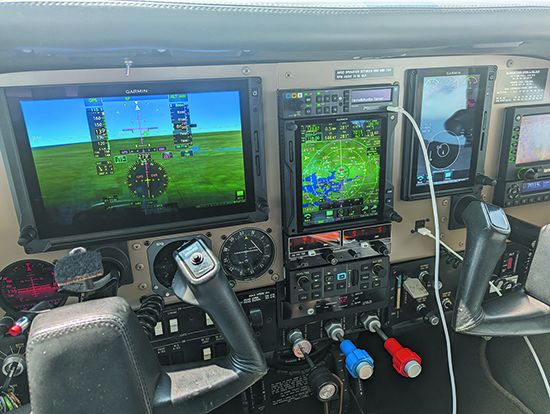AVIONICS BOOTCAMP: UPGRADE SURVIVAL TIPS
The response to our monthly Panel Planner 101 avionics upgrade feature has kept us busy. These reader submissions make for good discussion and we get a wide variety of airplanes and avionics combinations to work with. Send in photos of your panel and what you’re trying to get out of the upgrade, and we’ll kick around some suggestions to bring to shops for backstop and eye-watering quotes to get the job done. The goal is to help others get started in the right direction, and there are lots of lessons. One we haven’t talked about is having a plan to survive the stressful upgrade. Whether it’s new avionics, engines, paint or interior mods—it’s big work. These days, you wait a long time for scheduling and then wait some more while the airplane sits in various stages of disassembly on a shop floor. You might have to wait some more while the shop works through a post-install squawk and tweak list. While there are horror stories of avionics retrofits gone bad, there are plenty of success stories worth sharing. One worth learning from is the Cessna T210 panel pictured below.
It comes from my friend Scott Dyer, who just fetched his bird from the shop after a Garmin big-screen G500 TXi, GFC 500 autopilot and Garmin EIS engine display retrofit. While it was down for all that glass, he had the shop (Total Aircraft in Connecticut, which recently joined forces with VIP Avionics colocated on Brainard Field) do an extensive annual inspection. It was the first annual conducted on the plane by a different shop in 25 years. That’s not a bad thing—Total’s fresh eyes found a number of items that required some work. It spent a lot of time on the floor (and required break-in flights for cylinder work, plus a few avionics configuration flights). Still, Scott flew his squawk-free Centurion back to home base exactly as planned. And planning (by the shop and the customer) is the key to happy handshakes, no matter the upgrade. For this job, everyone did everything right—and that meant making smart decisions that started long before the airplane even left for the shop.
“The start date got pushed back a few weeks at the shop’s suggestion because it didn’t have an item it needed to complete the job,” Scott told me. That’s just good business and something not all shops get right. Why tear the plane apart if you aren’t ready? The supply chain is what it is and customers should understand there will probably be parts shortages. As luck would have it, the plane’s annual inspection would expire while it was down for the avionics, which was estimated to take 40-45 working days to complete. As encouraged by the shop, Scott made biweekly visits (a two-hour drive) to follow the progress, which was educational, and it also strengthens the working relationship. “On one or two trips there were some tweaks being made to the work and I valued the time I had speaking with the installer as he worked on my plane,” he said. Last, these projects take tremendous patience, effort and realism on the customer’s part, plus stellar communication from the shop as the project moves along.
“Did the work take a long time? Yes. Was I anxious to get flying? Yes. But the shop’s excellent communication with me—and me being involved throughout the process—made for a great process that ultimately delivered me a safe airplane that’s a joy to fly.” We’ll see how other shops rank in an avionics satisfaction survey report in an upcoming issue of Aviation Consumer.
—Larry Anglisano


